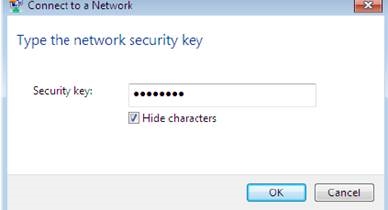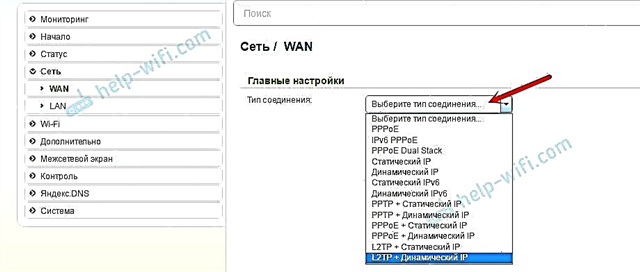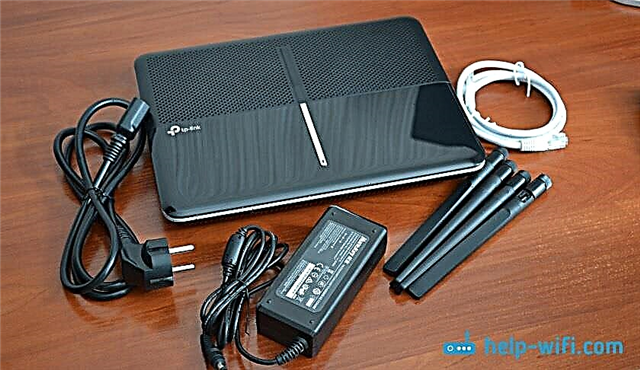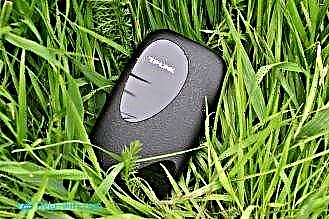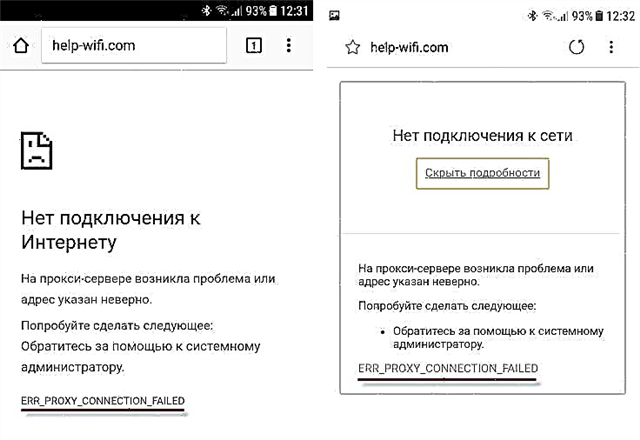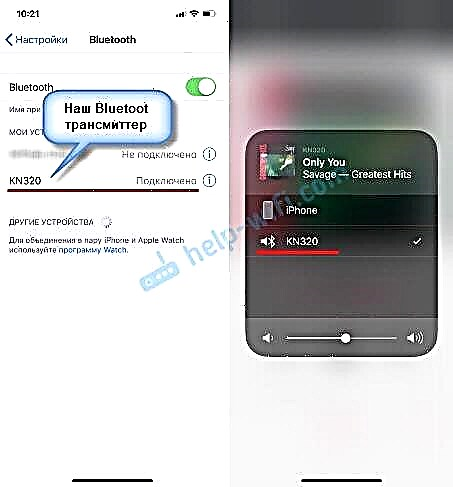There are already many models of speakers, home theaters, speakers with built-in Bluetooth on the market. This allows them to output sound from different devices without using wires. You can broadcast sound via Bluetooth from smartphones, tablets, computers, TVs, etc. And I do not mean portable speakers, but large acoustic systems (computer speakers), which usually can only be connected using a cable (3.5 mm Jack, optical , RCA). But what if we have a good speaker system, but no Bluetooth? How to add Bluetooth support for regular stationary speakers? What devices are needed for this and how does it all work? You will find answers to these and other questions in this article!
I have not even asked this question before. But after I ordered two Bluetooth transmitters for Aliexpress and started writing an article Bluetooth transmitter for TV (headphones), it turned out that these transmitters can not only transmit sound via Bluetooth, but also receive it and transmit it to speakers via cable. For the sake of interest, literally in a minute I connected the transmitter to my speaker system through the 3.5 mm Jack connector, switched it to RX mode (receiver mode) and brought the sound from the phone to speakers without built-in Bluetooth. Already when I decided to write this article, I googled a little and even found special Bluetooth audio receivers for speakers. For example, the popular company Logitech has such a device. It is called the Logitech Bluetooth Audio Adapter. It's not cheap (compared to Chinese Bluetooth transmitters), 3.5 mm Jack and RCA connection interface, no optical audio output.
To make it clear what this is about, I'll tell you right away how it works. A special audio receiver, or Bluetooth transmitter in receiver mode, is connected to the speaker system using a cable. Power is also connected to the receiver (via a separate power adapter, or via USB from any adapter, USB port, etc.). We turn on the Bluetooth receiver (which is connected to the speakers), connect to it via Bluetooth from any device (laptop, phone, tablet) and broadcast the sound to the speaker system. It's that simple!
Bluetooth audio receiver for speakers
As I wrote above, there are special devices for these tasks - Bluetooth receivers with 3.5 mm Jack and RCA output. They can also be found on request "Bluetooth Audio Adapter". I do not have such a device, but as I understand it, they were created to perform strictly one task (unlike Bluetooth transmitters) - to receive audio from any devices via Bluetooth and transmit it to any speakers via cable. You can find a lot of such devices in Chinese online stores. Among the branded successors, the same adapter from Logitech can be distinguished, I did not find others. There is also Meizu Bluetooth Audio Receiver, Xiaomi Mi Bluetooth Audio Receive, but they are more suitable for headphones.

If you need a device exclusively for receiving sound via Bluetooth and outputting to any speakers via cable, then such adapters will suit you. It works like this:

But you can go the other way. Buy a more functional device - Bluetooth transmitter. And use it in receiver mode.
Bluetooth transmitter for sound output to the speaker system
There are a lot of Bluetooth transmitters. I have already talked about them in more detail in this article. They can either transmit a signal via Bluetooth to headphones or speakers, or receive a signal via Bluetooth and transmit it via a cable to the speakers. I have a transmitter that I bought for almost $ 3 (which is very cheap), and even it can work as a Bluetooth audio receiver. Even such a cheap transmitter easily outputs sound to the speaker system from the phone.
This is how the simplest and cheapest Bluetooth transmitter looks like:

And here is the more expensive and sophisticated model (with support for optical audio input / output):

You can read about transmitters at the link above. Later in the article, I will show you how to use them exactly in tandem with acoustic systems.
Adding Bluetooth support for regular speakers
I will show using an example of a connection via a Bluetooth transmitter. First, let's look at connecting a simple, budget model. My speakers are the most common (Edifier R2700). They have the ability to connect via 3.5 mm Jack (on the speakers themselves RCA input) and have an optical audio input. So almost any transmitter is suitable for such speakers. Be careful when choosing a transmitter (more precisely, a cable). For example, my speakers don't have the usual 3.5 mm Jack input. There is only RCA. This means that the cable needs 3.5 mm Jack - RCA. If the transmitter has a 3.5 mm audio output.
How it works:
- We connect the Bluetooth transmitter to the power supply. Any transmitter must be connected to a power source. There are models with a built-in battery. You can power (charge) the transmitter from the USB port of any device, or through any power adapter (from a phone, tablet). But it is preferable that the power adapter can supply 5v, 1A.
- You need to connect the transmitter to the speakers with a cable. If your transmitter has an optical audio output and your speakers have an optical audio input, use that. If not, use 3.5 mm Jack, RCA.
- You may need to switch the operating mode on the speakers. Select the audio input (sound source) to which you connected the transmitter. Usually the "Input" button is responsible for this.
- The transmitter must be switched to the audio receiver (RX) mode. On expensive models, this can be done with a separate switch on the case. On cheap ones - by turning on - turning off and turning on the power of the transmitter (plugged into the USB port, pulled out and plugged in again). So that the indicator does not flash red, but blue. It is advisable to look at the instructions specifically for your device.
- After connecting, turn on Bluetooth on your device (phone, tablet, laptop, PC), and select the transmitter from the list of available devices and connect to it. It will be defined as headphones (headset) and it will be possible to output sound to it. And he, in turn, will transmit sound to the speakers via cable. If a PIN code request appears when connecting, try entering: 0000, 1111, 8888 or 1234.
Here's how it looks in practice. We connect the transmitter to the power supply and to the speakers. We check if it is switched to RX mode (I wrote about this above, point 4).

When the blue indicator on the transmitter is actively blinking, then the transmitter is available for connection. We just connect to it from any device via Bluetooth and output sound (just like on regular Bluetooth headphones or a portable speaker).

Since I have another transmitter, more expensive and functional, let's also look at its example. Everything is almost the same, only there the receiver mode (RX) and the activation of the connection mode is a little different. And we will connect it to the speakers through an optical audio cable.
On the transmitter, connect the optical cable to "SPDIF OUT RX". On the speakers in the "Optical" port (on mine it is called that). Further, on the transmitter, you need to switch to RX mode (receiver audio mode) and "SPDIF" (optical). If you connect via 3.5 mm Jack, then put AUX.

This is how the connection diagram looks like:

Let me remind you that the transmitter must work in RX mode. We turn it on, and double-click on the power key to activate the connection mode (make it visible to other devices). The indicator should be actively blinking blue. On your transmitter, things may be slightly different, see instructions.
All that remains is to connect to the Bluetooth transmitter from your phone or other device and you can listen to music on stationary speakers via Bluetooth.
Literally for 2-3 dollars (about the same as the cheapest transmitter) you can add Bluetooth support for almost any speaker. Even for some old models, since they are most likely connected via 3.5 mm Jack, or RCA. After that, you can connect to the speaker system via Bluetooth and wirelessly output sound from any devices. This scheme is also suitable for music centers, car radio and other devices that have AUX.
On phones, tablets and other mobile devices, Bluetooth works without any configuration. But on laptops and PCs, problems can arise. Just in case, I will leave links to some articles that may be useful to you if you want to connect your desktop computer or laptop to the Bluetooth transmitter.
- Setting up Bluetooth on a computer (PC). Bluetooth adapter connection and driver installation
- How do I turn on Bluetooth on my laptop?
- How to enable and configure Bluetooth on a Windows 10 laptop
Share in the comments how you connected and configured everything. What devices you use and what speakers you output sound to. If you didn't manage to set up something, or you still have questions about the choice of equipment, then you can ask questions, I will try to suggest.

